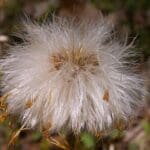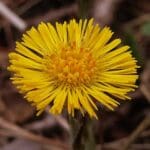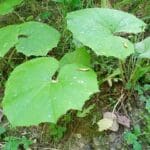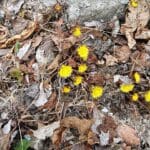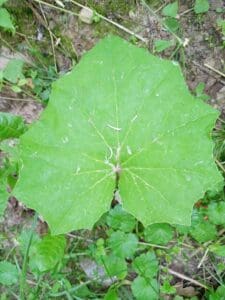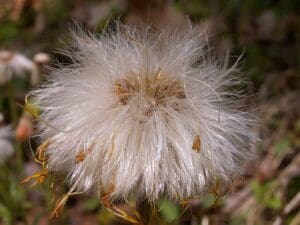Coltsfoot/ Spring / Summer / Edible
Common Names
Coltsfoot, Horse-hoof, bulls foot, foal’s wort and ass’ foot, Son before the father.
Botanical Name
Tussilago Farfara
Scientific Classification
Kingdom – Plantae
Order – Senecioneae
Family – Asteraceae
Physical Characteristics for Coltsfoot
Leaves
Leaves appear later in the year in mid spring to early summer, they have basel ‘hoof shaped’ leaves with a waxy green top and a pale green underside covered in a white downy fluff. They can grow up to around 25 cm wide.
Flowers
Bright yellow flowers appear in early spring, measuring around 1.5 cm across. Very similar in appearance to that of a dandelion but with a series of small, erect scale-like stems, often with a greenish/purple ting covered in white downy hairs . The flowers usually disappear well before the leaves begin to grow; this is where the name ‘Son before the father’ comes from.
Seeds
Seeds appearing as flowers start to die off around mid to late summer, similar in appearance to a smaller, squashed Dandelion clock. Each flower head will hold around 150 seed heads. Each plant can hold between 1500-2500 seeds in total.
Roots
This is a perennial plant , it spreads through underground root systems. They can be very brittle and can regrow from the tiniest piece, making the plant notoriously robust and difficult to get rid of (not that you would want to mind you).
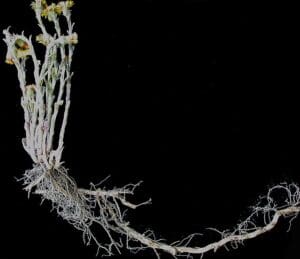
Habitat
Often found in exposed areas, with disturbed clay based soil. Very common in ditches, along gravel roads, forest path edges as well as cliff tops and landslides. Tolerating most harsh conditions well.
Known Hazards
There is debate on the toxicity of this plant due to the presence of pyrrolizidine alkaloids found in this plant; This can result in liver damage.
It is suggested that you do not consume this plant in large quantities, or over long duration and should be avoided if pregnant.
It is recommended that you do not consume any part of this plant raw, particularly the root.
Could be Confused with
Butterbur- this has a similar leaf shape but has much more round, scalloped edges. This has the same considerations as Coltsfoot does.
Edible Uses
Flowers- used as a dandelion flower alternation in cooked or fermented recipes- best used for wine!
Stems- can be boiled or steamed as a vegetable similar to an asparagus.
Leaves- these can be used as a salt alternative! Simply air dry the leaves, then roast until white in colour and powder like. This is an acquired taste, a little goes a long way.
Extracts of the leaves can also be used to make a very traditional rock, still sold at many seaside resorts in the UK to this day!
Notes on Herbal Uses
There is a long history of Coltsfoot being used as a herbal remedy. traditionally dried and made into a tea or smoked as well as being freshly juiced for its medicinal properties; soothing coughs, asthma, colds and sore throats.
Studies have shown anti-inflammatory properties in rodents; showing promising effects on gout, asthma and even prevention of cell damage in the brain. However there is insufficient evidence to suggest beneficial human applications.
Extra notes from the Foragers
Stockley’s Sweets in Lancashire is the only maker of Coltsfoot root across the world!
The flower of this plants is wonderful for early pollinators and the seed heads are a common nesting material for a variety of small birds including Goldfinchs
Reference List
Stockleys Coltsfoot Rock Sticks (toffeeworld.co.uk)
Coltsfoot: Potential Benefits, Side Effects, and Dosage (healthline.com)
Edible Parts of Coltsfoot: Ultimate Guide 🍃 (greg.app)
Tussilago farfara (Coltsfoot) | BBC Gardeners World Magazine




